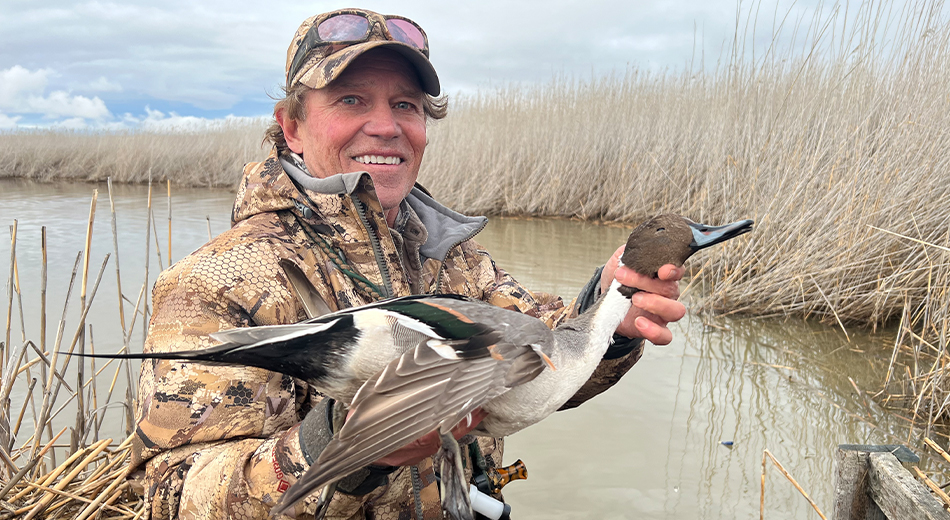
Pintails Increase, Bag Limits Expected to be 3 Daily for 2026-2027
The northern pintail breeding population estimate of 2.24 million is a 13% increase over 2024’s estimate of 1.98 million, according to the Waterfowl Population Status report released by the U.S. Fish and Wildlife Service on Sept. 2. The increase came as a welcome surprise, given that dry habitat conditions prevailed this spring across key regions for breeding pintails, including prairie Canada and the eastern Dakotas.
Data suggests that many pintails overflew the dry eastern Dakotas—where 50% fewer were counted than in 2024—to seek better breeding conditions to the north and west. The resultant redistribution is intriguing: One-third of the breeding pintails settled in the Alaska/Yukon Territory/Old Crow Flats region (up 30% over 2024 to 712,000, but 20% below the long-term average), with another one-third in Central and Northern Alberta/Northeast British Columbia/Northwest Territories (up 36% to 736,000, 95% above the LTA). They also showed strong increases in southern Alberta (up 192%, though still 80% below the LTA) and southern Saskatchewan (up 41% but remaining 71% below the LTA).
“The Arctic may be capable of producing a lot more pintails than we thought,” said Dr. Frank Rohwer, president and chief scientist of Delta Waterfowl. “Conventional wisdom is that production is very poor when pintails nest that far north. However, it’s possible that the Arctic and boreal forest can help produce enough ducks to hold the line during consecutive years of dry conditions in the prairie pothole region.”
Overall, pintails remain 41% below the long-term average.
However, this spring’s population increase puts them solidly above the threshold required for a liberal season under the Interim Pintail Harvest Strategy adopted by the U.S. Fish and Wildlife Service in May 2024. A bag limit of three pintails per day will be prescribed again for the 2026-2027 season.
For the first time in decades, hunters can take three pintails daily during the upcoming 2025-2026 season across most of the United States. Be sure to check local regulations, as states are allowed to set stricter limits. Kansas kept a one-pintail daily bag for 2025-2026.
Delta Waterfowl supports the new management strategy, because improved science has shown hunter harvest of pintails had been greatly overestimated for years. The new Interim Pintail Harvest Strategy calls for a closed season when the breeding population estimate is less than 1.2 million, while the old model prescribed a closure below 1.75 million birds.
Importantly, the pintail population has stability within these parameters. The population has never fallen below 1.78 million—2022’s record low—since surveys began in 1955. And the breeding pintail population’s 10-year average (2016-2025) is 2.30 million—not far above this year’s estimate, despite the less-than-favorable condition breeding conditions in recent years.
U.S. hunter harvest was an estimated 498,672 pintails during the 2024-2025 season. California hunters bagged 86,358 sprig—the most of any state. Texas hunters shot 45,114, Arkansas 36,067, North Dakota 33,384, and Louisiana hunters took 30,185 birds. —Paul Wait and Kyle Wintersteen
